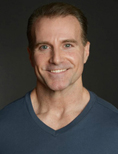Self-improvement speaker and author Earl Nightingale described attitude as “The angle or bearing, including actions, feelings and moods,” from which you approach a problem or situation. That’s a great definition. I like to say something similar; that attitude is the “lens” through which you perceive and respond to your world. Although attitude is mental, there’s no question it affects your life in very physical ways. In fact, the wrong attitude can sabotage even the best-designed nutrition and training plan.
There’s one particular attitude problem that kills the diet and exercise programs of millions of people every year, denying them of the health, fitness and vitality they deserve. In severe cases, it can be the cause of more serious problems like eating disorders. It’s called…
The “All or nothing” attitude.
This is one big bad attitude that appears in many different forms. I’ve listed 7 of them below. If you recognize any of these in your own life, you need to nip them in the bud fast, or they will surely kill your progress.
When you follow the suggestions in this article for changing to a new positive attitude, in no time at all, you will see (from your change in results), how true it is what William James wrote: “Human beings can alter their lives by altering their attitudes of mind.”
The 7 Types of “All or None Attitude.”
1. “I don’t have any time!”
People often say to themselves, “I’m so busy, I don’t have the hour (or 30 minutes, etc) that this workout program asks for, so what’s the use in doing anything? I’ll start later when I have more time to devote to doing the whole thing right.”
The irony is that the time never is “just right” because “life happens” and you’ll never have more time to “do it right,” because your schedule is always 100% full. In fact, ambitious people will never have enough time to do all the things they want to do in life.
Fortunately, you always have time for the things that are most important to you. And that’s the first step: If you want to do something, you must make it a priority and create a space for it.
That means pushing down something of a lower value or priority that’s currently taking up space in your schedule. That could include watching TV, surfing the web, reading magazines, gossiping with friends, taking long lunch breaks or even sleeping.
If someone watches any TV and says they have no time for exercise, they might want to question their priorities. Not to mention, that’s another case of all or none thinking: Why does it have to be one or the other? If both are important to you, how about putting a bike or treadmill in front of your TV?
The second step is to remember that any exercise is better than no exercise. What’s more, there are ways to get more results in less time, and many trainers specialize in time-efficient training for busy people.
Also remember that what’s ideal for maximum results and what’s realistic when life is crazy may be very different. You may not be able to do the ideal workout, but you can still work out a little bit and at least maintain what you have.
If you don’t voluntarily set aside at least a small amount of time every day to take care of the greatest gift, asset and possession you own – your health and your body – then at some point in the future, news from the doctor may force you to do it involuntarily… if it’s not too late.
2. “I have physical limitations or injuries, so I can’t exercise at all.”
I truly feel for people who are struggling with orthopedic problems or injuries, especially when they have the sincere desire to get healthier and fitter, but they feel unable to do anything physical. Fortunately, while you may not be able to do everything, you can do something.
Naturally, some injuries can lay you up completely, and you should always follow the advice of your doctor. However, other injuries or conditions are localized to the knee, shoulder, ankle, elbow and so on, but they don’t limit what you can do for the rest of your body.
A single pain or injury often leads to all or none thinking such as, “My right foot hurts so I can’t work out at all.” Why do you believe that? What about your abs and core? How about your upper body… shoulders, biceps, triceps? Upper back? What about your other leg?
What’s even more damaging is the all or none attitude when all exercise truly is restricted (doctor’s orders) and you tell yourself, “Oh well, no sense in starting this diet since I can’t exercise for the next 6 weeks.”
The truth is, if you can’t exercise at all, then nutrition is more important than ever, isn’t it?
The remedy for this version of all or none attitude is “possibility thinking,” which means you think in CANS not can’ts.
Ask yourself, “What CAN I do,” (or “what can I do instead of”), rather than what can’t I do? If there is a health or medical issue involved, ask your doctor the same question: “Ok, I know I can’t do this, but can I do that?”
I’ve seen men and women with arthritis, knee replacements, in wheelchairs or even without a limb achieve remarkable success, including outstanding health, low body fat and excellent strength and muscle development. For some real inspiration about what’s possible, look up the Paralympic games.
3.”I have to be perfect on my diet and eat 100% clean to lose weight.”
The idea that you have to eat 100% healthy, nutritious foods (aka “clean foods”) 100% of the time may be the most common of all the all-or-none attitudes when it comes to nutrition and weight control.
Weight loss is achieved by consistently establishing a calorie deficit, not by eating 100% clean. Health food fanatics take note: You could eat 100% perfect – nothing but natural, unrefined, nutrient-dense foods – but if you eat too much (if you’re in a calorie surplus), you’ll get fat.
The truth – and you should take this as very good news – is that you don’t have to be perfect. As long as you hit your calorie goal, met your essential micronutrient needs and get your macronutrients in the right ballpark, you can include your favorite foods – anything – and still lose weight.
The key is to find the right kind of moderation. Eating 90% nutrient-dense, healthy foods is more than good enough to ensure good health while you also reach your fat loss goals.
You can forget trying to be perfect with your foods choices for the sole reason that it’s not even necessary for fat loss. But here’s a second reason: It’s a psychological truism that you tend to crave what you cannot have. Therefore, trying to eat “clean” 100% of the time, or be “perfect” on your diet usually backfires.
The 10% (or whatever compliance rule you choose for your “free meals”) is like a “release valve.” without giving yourself a little bit of nutritional flexibility, the pressure of missing favorite foods will build up and most people will eventually “explode” in the form of a binge.
4. “I cheated on one meal so my entire day is blown!”
If you get one flat tire, do you jump out of your car and slash the other three tires? Hey, you have one flat – might as well have four, right?
That’s ridiculous, yet many people’s brains are wired to think that if you screwed up one meal, your entire day is shot, or worse, “I might as well pig out the rest of the day.”
Here’s a novel idea: If you fell off track, why don’t you simply get right back on track?
Don’t wallow in guilt. Don’t punish yourself by skipping meals or doubling your workouts. You’re one meal or one workout away from being back on the program, aren’t you?
Get back on it! It’s that simple!
5. “I messed up one day so my whole week is blown. I have to start over Monday!”
People who think that getting off track for one meal ruins an entire day are also likely to fall prey to the next level up: If you mess up one day, you think the entire week is shot. Might as well start over on Monday.
I would crack a joke about “Start over Mondays” – if it weren’t a serious problem.
Suppose your day really was the pits. Your diet completely fell apart. So what? Every day is a new day and every day is a great day for a fresh start. There is no better way to start your day than with a good workout or a healthy meal (or both). So there we are back to the same advice: you’re one meal or one workout away from being back on track.
A great reason for having a great healthy breakfast is because it sets a healthy tone for the day. With one good meal in the bag early, your behavior is more likely to stay consistent the rest of the day (not to mention, most people are less likely to have late day hunger or cravings that lead to binges).
Never wait until next Monday. Every day is a great day for a new start and that’s a great affirmation to remember…
“It’s a new day, it’s a new dawn, and I’m feeling good!” – Nina Simone
6. “I messed up [insert: a meal, day week] so my entire program is blown.”
You probably knew this one was coming next, didn’t you? How people make this kind of a leap – from messing up one week, one day or even one meal – to “My entire program is blown” is hard to fathom, but I see it every day.
I’ve lost count of the times that people have entered a 3-month transformation contest or begun a several month bodybuilding competition prep and dropped out mid way through, even after making great progress.
Why? Because in their minds, they thought that getting off track at all, whether for a week, a day or a single meal, meant the whole program was shot, all 3 or 4 months of it, so they had to start over from day one, or (more common), they might as well quit.
This is another example of how perfectionistic thinking can kill a program. It’s why flexibility is important – even in contest-level dieting – and why approaching your endeavors – even competition – as a part of your lifestyle, rather than a “12 week program,” or a contest prep, is a key to success.
A lifestyle is never something you go on or off, it’s something you live every day. The only difference during the pursuit of big goals is in the level of intensity and focus as you pass through the cycles and seasons.
7. “I didn’t reach my goal on time, so I failed (or I’m a failure).”
This one is especially dangerous because some people will take a single negative event that could be viewed as an important learning experience, and not only call it a failure, but also generalize it to their entire life or personal identity.
Failure is actually an essential part of success. Failure is feedback and the raw material for learning. As a matter of fact, you don’t have to accept your results as failure at all. You can reframe your attitude:
If you don’t reach your goal in the time frame you set for yourself – you didn’t fail, you just underestimated your completion date. It’s a delay, not a denial. Set a new completion date and carry on.
This is why I always advise my clients and readers to “Write your goals in ink, and your deadlines in pencil…”
It’s why football coaching legend Vince Lombardi famously quipped to his team (when the scoreboard showed them behind at the end of the fourth quarter), “We didn’t lose, we just ran out of time.” He knew that every man gave his best, and that’s a winning game, regardless of the score.
Attitude is a choice
Your fitness journey is not a black or white, win or lose, pass or fail situation. All or none thinking creates unnecessary stress and doesn’t allow you to give yourself any credit for what you did right or to learn from your mistakes and experiences.
With a simple shift in attitude, you can change your entire world! If attitude is the “lens” through which you perceive your world, how do you see yours?
Two people can produce the same result or be faced with the same challenges and obstacles, yet each person can see something completely different, feel differently, react differently and attach totally different meanings to that same event. It all depends on your attitude…
The great news is that attitude is not something that happens to you, it’s a choice – one that you control completely and only you can make for yourself.
About Tom Venuto







Such great advice . I’m guilty of the all or nothing through out the years. I’m 67 female. I have sciatica am
Nod chronic leukemia, but I get to the gym three times a week. For sixty minutes. Love your sound, practical advice. Thanks a million, keep it coming Tom. I appreciate your no nonsense approach!
Thank you Marlene. Sounds like you are doing it, despite the challenges. Keep up the great work!
“Two people can produce the same result or be faced with the same challenges and obstacles, yet each person can see something completely different, feel differently, react differently and attach totally different meanings to that same event. It all depends on your attitude…”
This is exactly how champions think!
When we have a change of perspective, we experience a change on the inside- what we see, how we think and even how we feel- even though nothing is different on the outside.
Very good points in this article. Thanks Tom.
As always, thanks for the feedback Carlos.
Awesome article, Tom!
I liked it so much that I became a member, bought the latest book and already have my calendar in place for my fitness program. With 75 lbs to lose as the target – I need all the advice and accountable support I can get!
awesome Tim, thanks. Hope to see you at the Burn the Fat Inner Circle and the Burn the Fat Challenge. Here’s to your success! Tom
Another great little editorial!! Thanks a lot Coach! It really helps to be reminded of these truths. 2014 is going to be my year!
Excellent words Tom and so true!
Hello Tom,
I’d like to share one additional bad attitude, that I am struggling to change right now.
You know the saying “if you want to do something bad, do it right!”
Sometimes I allow myself a “cheat” meal, where I eat my favorite foods that I miss most of the time. The problem here is I eat ALL OF THEM … yes! all of them in one meal. Every single time I think “that would be the last cheat meal in a long while, so I have to have all I can eat” … and every single time I extremely overeat and feel bad about doing so afterwards. The problem is I only remember how tasty my food is not the bad feeling afterwards. I think this is what you referred to as an eating disorder at the beginning of your article.
Do you have any advice regarding such a behavior? And do you know some people having that same problem?